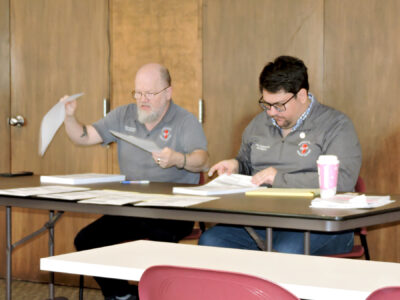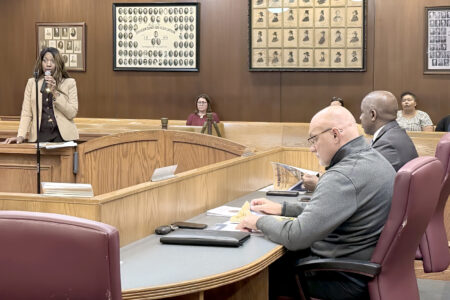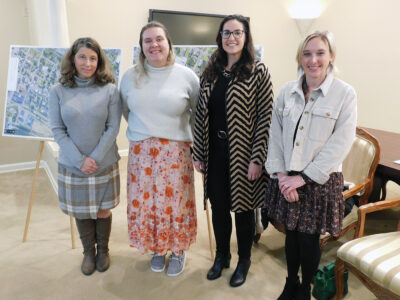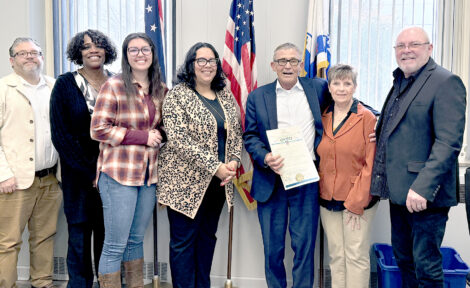JCESC grants fund innovative projects at Steubenville Schools
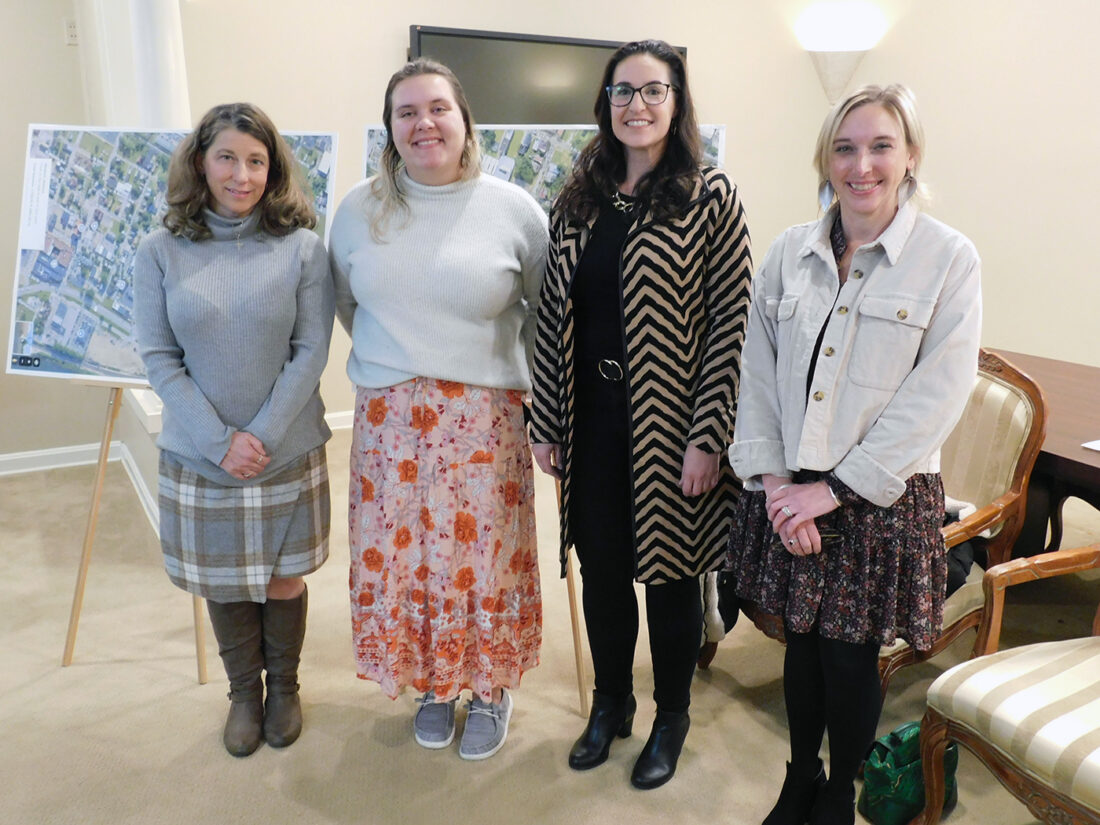
GRANTS AWARDED — Steubenville City Schools teachers, from left, Sara Nocera, Victoria Marvin and Tiffany Mills received Best Practices Grants from Amber Fomenko, special education director of the Jefferson County Educational Service Center. -- Contributed
STEUBENVILLE — Best Practices Grants from the Jefferson County Educational Service Center are helping teachers at Steubenville City Schools put some innovative opportunities in play for their students.
The board of education welcomed JCESC Special Education Director Amber Fomenko on Nov. 19 to present three grants of $700 each. The recipients were chosen out of 13 grant proposals from Steubenville City Schools educators.
“It was hard to choose,” Fomenko said.
The board of education extended thanks.
At Wells Academy, Sara Nocera is integrating physical activity and learning for her elementary students with a Fluency in Fitness program for 250 preschoolers through third graders.
“Kind of doing kinesthetic learning, so that they way they actually retain the information better,” she said.
The practice will give some welcome relief to young children who would otherwise have prolonged inactivity in the classroom.
“They have a hard time. They have to sit for such long periods of time anyway during the lessons,” she said. “The reason why I was looking for a program like this is because that way you can get them up and moving.”
Fluency in Fitness supplements students who have different learning styles than sitting and writing, as well as acting as a learning tool for students with autism and ADHD. Nocera said activity gives them the chance to review and have a brain break to better internalize the lesson and remain engaged.
“That’s the reason why I wanted to incorporate the program in my classroom,” she said, adding many students could benefit. “They are the ones who are having a hard time with review and keeping engaged in lessons, the ones who need that moving and getting up.”
She anticipates seeing an increase in test scores.
The program is very sustainable, and the grant dollars will go to licensure of about $139 for each grade level. The pre-K through third grade initiative may be expanded to fourth grade.
This marks her fourth time receiving the grant. Other grants have been used to incorporate technology, for the purchase of a book vending machine to provide books for good behavior and a STEM project involving geography exercises such as building globes.
“It was wonderful for our school system,” she said. “I’m very appreciative that I got the opportunity to get the grant again and I can’t wait to incorporate this with all the elementary classes.”
Victoria Marvin of the McKinley STEM Academy will be encouraging curiosity, collaboration and problem-solving among her second graders with new STEM bins.
“These bins are hands-on, inquiry-based activity boxes that let students explore science, technology, engineering and math in creative and meaningful ways. Each bin connects directly to Ohio’s Learning Standards.”
More than 21 students stand to benefit. Marvin anticipates seeing her students explore, model, evaluate and explain their design ideas, while learning values such as persistence and teamwork.
“At McKinley, we believe learning should be active and engaging. The STEM bins will give students the chance to think like engineers and scientists every day,” she said. “We’re so grateful for this opportunity through JCESC’s Best Practices Grant. It will truly spark innovation and excitement in our young learners.”
Also at the McKinley Academy, Tiffany Mills will be using her grant to provide students with practical experience, mentorship and a chance to learn about the natural world while creating bird habitats. More than 200 students will participate. This is her first time receiving a Best Practices Grant.
“I am extremely excited about this opportunity for my students,” she said. “I plan to use the grant by having McKinley STEM elementary students design and build birdhouses with guidance from high school mentors. They will engage in measuring, cutting and assembling materials using real tools and applying STEM skills in a hands-on, collaborative project. This collaboration will create lasting bird habitats and foster meaningful connections between students of different ages.”
Some birdhouses will go home with students and others will be placed in the school yard. Mills said this is an excellent way to employ unused outdoor space as a learning environment.
The younger students will gain fine motor, confidence and teamwork skills, while older students develop leadership and teaching abilities. The birdhouses will provide lasting wildlife habitats while fostering environmental stewardship. With reusable tools, permanent installations, and ongoing cross-grade mentoring, the project is sustainable and ensures continued STEM learning, collaboration and community impact year after year.
“One unique aspect of this project is the strong collaboration across grade levels. Our elementary students gain hands-on environmental science experiences, while the high school carpentry students engage in meaningful, real-world project work that benefits younger learners. This connection builds community and shows students that their learning has purpose beyond the classroom.”

